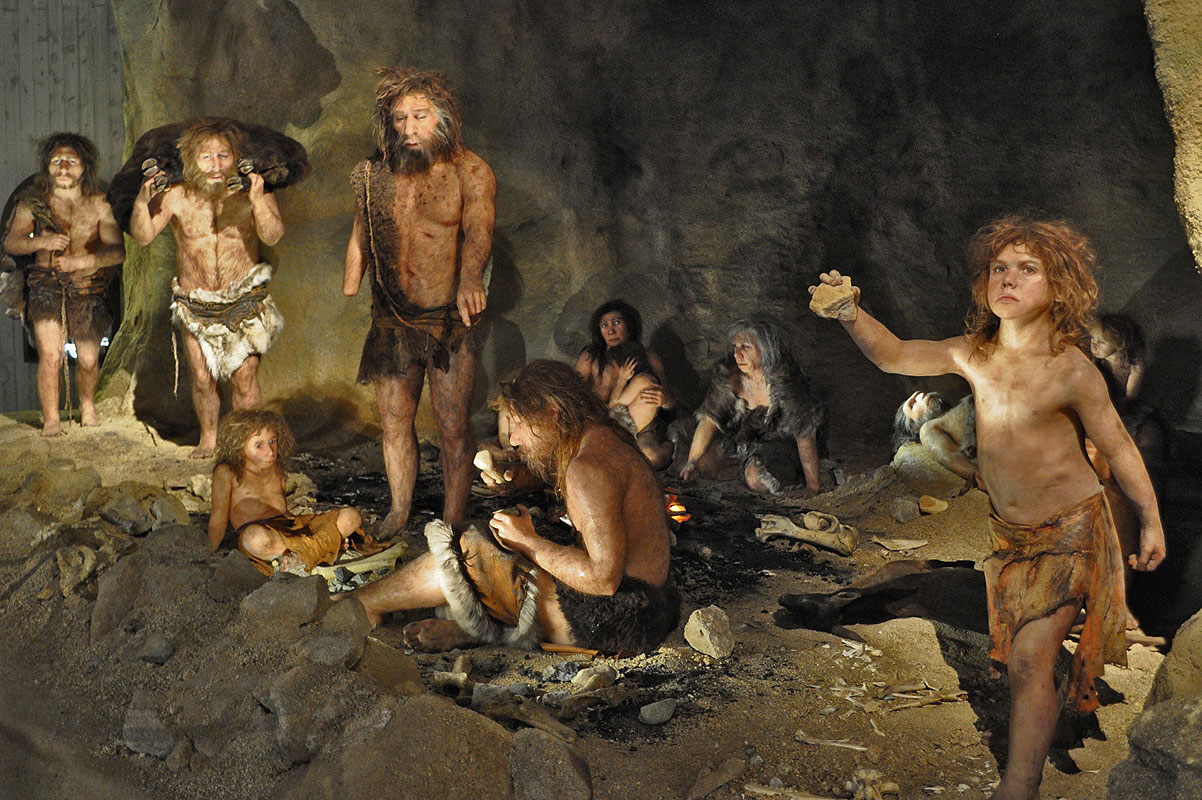الانسان القديم انجليزية Archaic humans
السلام عليكم ورحمة الله تعالى وبركاته
الانسان القديم انجليزية Archaic humans

Archaic humans
"Dawn men" redirects here. For the stone
circle, see Dawn's Men.
Homo
rhodesiensis "Broken Hill Cranium": dated to either 130,000 years ago
(using amino acid racemization determination) or 800,000 to 600,000 years ago
(within the same time as Homo erectus), depending on which dating method is
used.
A
number of varieties of Homo are grouped into the broad category of archaic
humans in the period beginning 500,000 years ago (or 500ka). It typically
includes Homo neanderthalensis (40ka-300ka), Homo rhodesiensis (125ka-300ka),
Homo heidelbergensis (200ka-600ka), and may also include Homo antecessor
(800ka-1200ka). This category is contrasted with anatomically modern humans,
which include Homo sapiens sapiens and Homo sapiens idaltu.
Modern
humans are theorized to have evolved from archaic humans, who in turn evolved
from Homo erectus. Varieties of archaic humans are sometimes included under the
binomial name "Homo sapiens" because their brain size is very similar
to that of modern humans. Archaic humans had a brain size averaging 1200 to
1400 cubic centimeters, which overlaps with the range of modern humans.
Archaics are distinguished from anatomically modern humans by having a thick
skull, prominent brow ridges and the lack of a prominent chin.
Anatomically
modern humans appear from about 200,000 years ago and after 70,000 years ago
(see Toba catastrophe theory) gradually marginalize the "archaic"
varieties. Non-modern varieties of Homo are certain to have survived until
after 30,000 years ago, and perhaps until as recent as 10,000 years ago. Which
of these, if any, are included under the term "archaic human" is a
matter of definition and varies among authors. Nonetheless, according to recent
genetic studies, modern humans may have bred with "at least two
groups" of ancient humans: Neanderthals and Denisovans. Other studies have
cast doubt on admixture being the source of the shared genetic markers between
archaic and modern humans, pointing to an ancestral origin of the traits
originating 500,000 to 800,000 years ago .
New
evidence suggests another group may also have been extant as recently as 11,500
years ago, the Red Deer Cave people of China. Chris Stringer of the Natural
History Museum in London has suggested that these people could be a result of
mating between Denisovans and modern humans. Other scientists remain skeptical,
suggesting that the unique features are within the variations expected for
human populations.
هام : هذا الموضوع ضمن تصنيفات المدونة
بحوث مدرسية جاهزة نشكرك للمتابعة . يمكنك نقل
الموضوع من المدونة لكن بشرط يجب ذكر المصدر و ذكر رابط الموضوع الاصلي
| نسخ الرابط | |
| نسخ للمواقع |






0 commentaires: